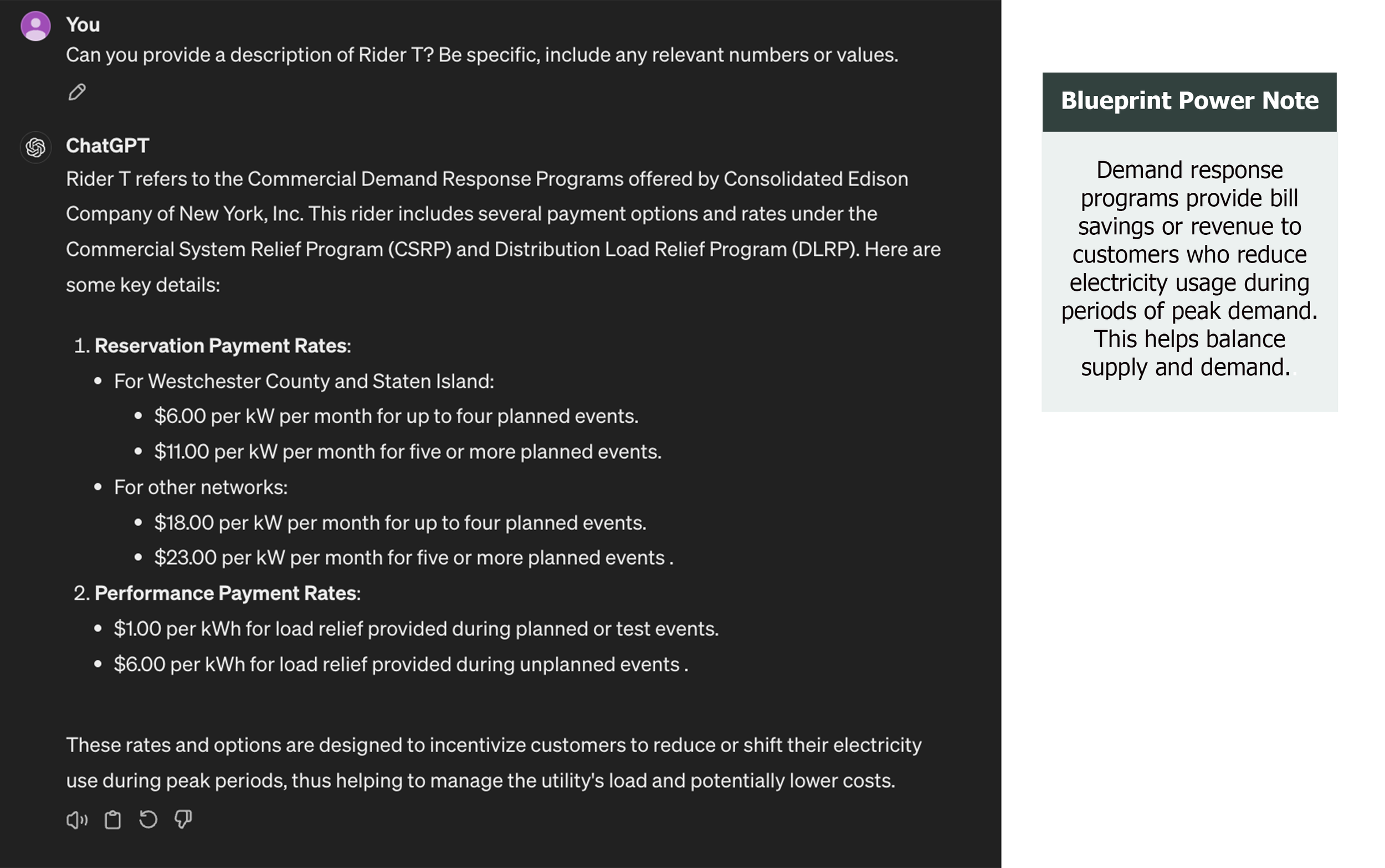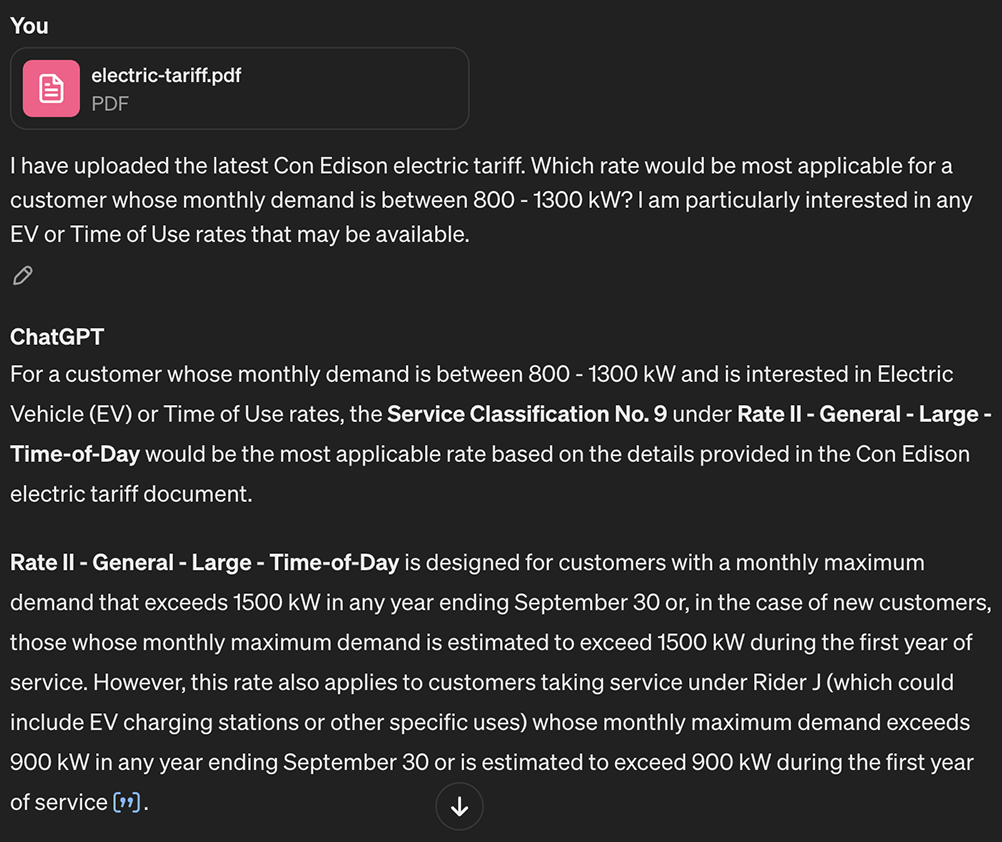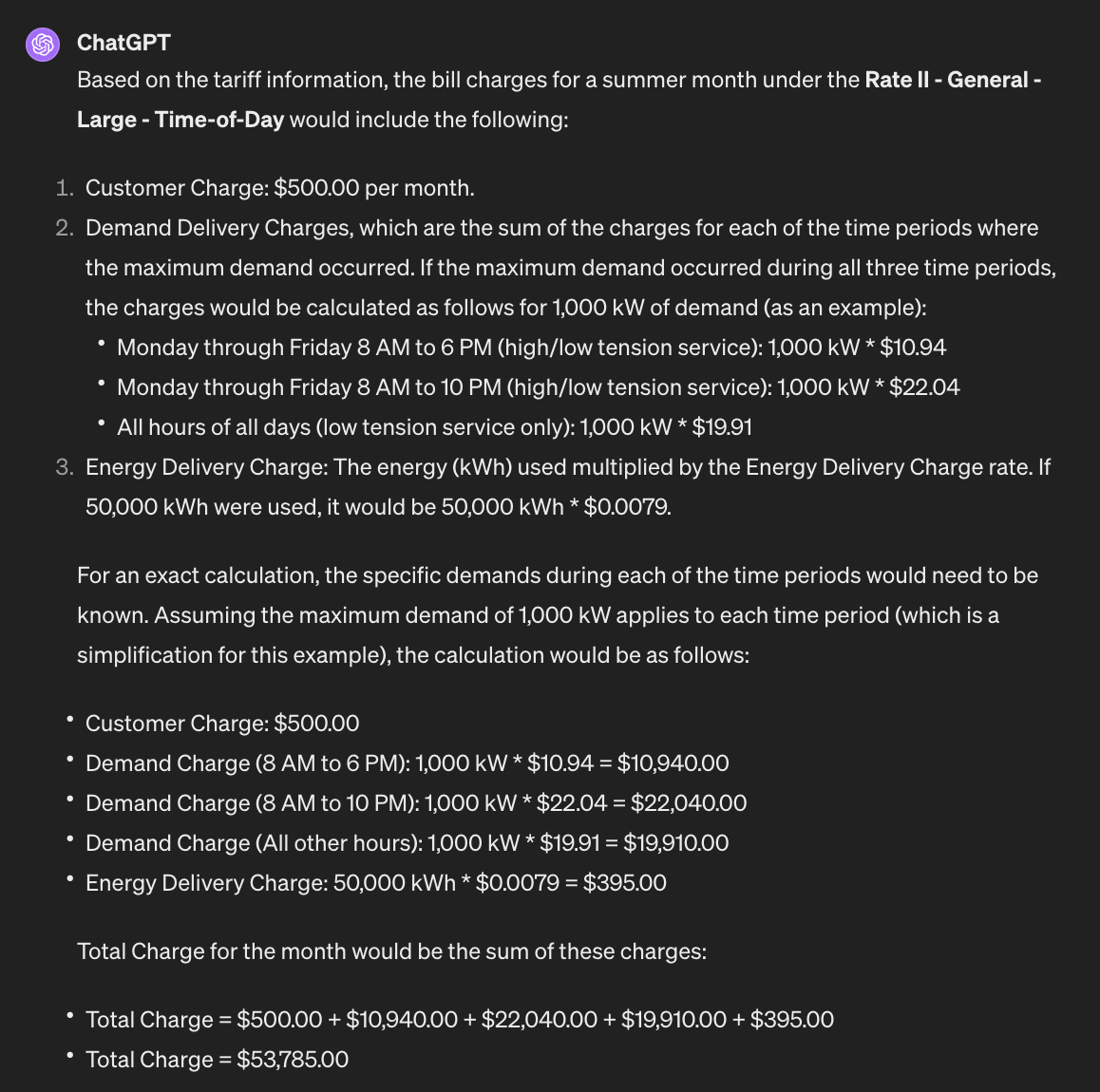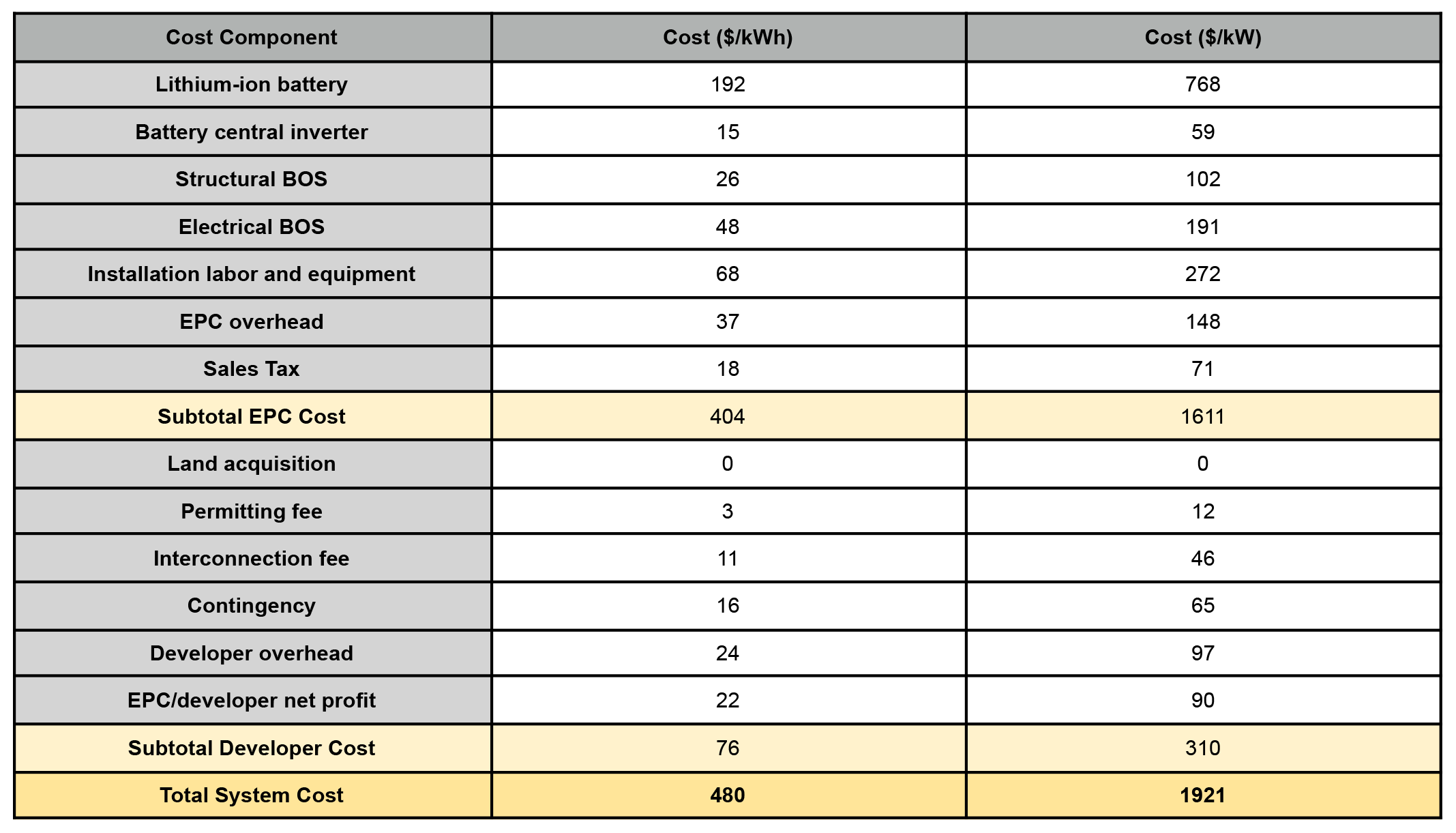Exploring AI: 3 Potential Use Cases for Analyzing DER Opportunities
By Sanjana Jagannathan, Simulation Engineer and Tony Thai, Simulation Engineer
Artificial Intelligence (AI) is all over the headlines. Scanning any news aggregator, you can’t avoid seeing countless new articles on how GenAI chatbots built on large language models (LLMs) can handle a wider range of complex tasks: text summarization, language translation, conversational Q and A, creative writing, image creation, and even more advanced tasks like modeling and forecasting.
It seems everyone is talking about or, more specifically, has an opinion about AI – our industry included. Power experts and non-experts alike are sounding off on how AI is going to change the energy landscape. Where there are optimists, you will inevitably find detractors who challenge the hype.
The following quote is an example of these spirited debates.
“Billionaire media mogul Barry Diller may claim that AI is “overhyped to death,” but the reality is that AI is transforming the world in ways that were once thought impossible. In the field of distributed energy, AI is being used to optimize energy distribution, reduce energy loss, and increase the efficiency of energy consumption. This is leading to a more sustainable future, where energy is used more intelligently and effectively… AI is not overhyped, it is a game-changer, and its impact on distributed energy is just one example of its transformative power.”
And the source of AI’s defense? Well, none other than Microsoft’s chatbot Copilot, when prompted to “take the other side of the argument” of “why AI is living up to the hype written using spirited language and formed as a persuasive argument… and reference distributed energy.”
But let’s stop speaking in generalities and get more specific.
What can GenAI do to support Blueprint Power’s work now?
Our parent company, bp, has publicly highlighted how it has been exploring and using AI to help with the energy transition (see bp’s Reimagining Energy Magazine, November 2023). This includes the potential of AI to reduce mundane tasks so team members can focus more of their efforts on creative problem solving, analysis, and developing new, innovative solutions. The Data Science simulation team at Blueprint Power has recently investigated some opportunities where GenAI can be applied to our common use cases and workflows. We identified and investigated three use cases for LLM chatbots that can streamline the analysis of distributed energy resources (DER), including electric vehicle chargers, behind-the-meter solar photovoltaic systems and battery energy storage. This exploration is intended to identify how GenAI can assist with or accelerate repetitive, mundane or other manual tasks and, ultimately, lead to increased team productivity. This is not a replacement for subject matter expertise or critical thinking; rather it is a tool to simplify and complement everyday work. As shown in more detail below, the state of the technology still requires a certain level of human vetting to confirm accuracy and confidence of its output.
As part of this investigation, we examined AI tools, such as Microsoft Copilot and OpenAI ChatGPT, that can automatically interpret complex electricity tariff language, provide digestible document summaries, and select appropriate utility service tariffs and parse rates to facilitate the development of better DER performance optimization strategies. These AI tools can also provide initial estimates for DER installation costs based on location and project specifications.
Now for the fun part. In running with the GenAI chatbot theme, the following Use Cases section of this blog post (up to the Limitations section) was written independently, section-by-section, by an AI chatbot with minimal editing from the Blueprint Power team (mainly to ensure accuracy and smooth transitions between topics).
– Start of AI chatbot-written content –
Use Cases
Use Case #1: Interpret and summarize complex electricity tariff documents
ChatGPT and Copilot can be very helpful in understanding tariff documents. They can automatically find important information like rates, terms, conditions, and any changes in regulations. They can also analyze and make sense of complex tariff language, finding key information that affects financial decisions. This allows for quick comparison of tariffs from different regions or time periods, helping to inform better strategies for energy optimization.
The figure below displays an example of Microsoft Copilot’s ability to pinpoint the relevant EV tariff in Garkane Energy Co-Op’s tariffs document online and summarize its key points. (The blue box contains the prompt given to the AI bot, and the white box contains its response.)
Fig. 1: An example exchange with Copilot to summarize a lengthy tariff document and distill the relevant information.
AI bots are also exceedingly helpful in explaining the terms and conditions of relevant demand response programs included in a utility’s tariffs document. Following is an example of ChatGPT summarizing the publicly available Rider T, offered by Con Edison to customers wanting to participate in the Commercial Demand Response Program and Distribution Load Relief Program. The summary provides a good, high-level overview of the different programs, making it easier to delve into the 17 pages covered by the rider in the document.
Fig. 2: ChatGPT description of Demand Response programs offered by Con Edison
Some studies have shown that using AI can reduce the time required for document analysis by up to 90%. Assuming an average tariff document analysis time of an hour:
If an engineer simulates 8 DER project sites in a week, tariff analysis might require an entire day of work if the projects are in different utility territories or fall under different service classifications. With AI, the time required for document analysis could potentially be reduced to under an hour, saving the engineer over 7 hours per week. Using AI can result in significant time and cost savings.
Use Case #2: Service class tariff selection and rate parsing based on customer specifications
Beyond generating summaries of documents, AI chatbots can also help identify and explain specific rates in straightforward terms. Through interactive queries, these tools can offer personalized tariff class selections for a given customer profile, calculate applicable bill charges based on usage, and explain how each charge was calculated. This approach transforms the cumbersome task of navigating tariff documents into a more accessible and user-friendly experience, making it easier for businesses to make informed decisions.
The following two images (Figures 3 and 4) display the effectiveness of ChatGPT in helping us understand Con Edison’s various electricity tariff offerings in New York. The bot was asked to select the most applicable tariff for a customer with a maximum demand between 800 and 1,300 kW, with a preference for Electric Vehicle and Time of Use rates.
Fig. 3: ChatGPT selects and describes Con Edison’s SC9 Rate 2 tariff
Given our experience in selecting the best rates for commercial customers in New York City, we were impressed with the bot’s tariff selection for the specified criteria. Next, we had the bot estimate bill charges for the given site by analyzing the rate structure and subsequently, present the breakdown of charges.
Fig. 4: Detailed breakdown of Con Edison’s SC9 Rate 2 tariff from ChatGPT
The image below depicts the effectiveness of Microsoft Copilot in analyzing Garkane Energy Co-Op’s (a Utah-based electric utility) tariff and rate offerings online and providing a recommendation for an EV charging site with a 500 kVA output.
Fig. 5: Copilot selects a tariff for a Garkane Energy Co-Op electric vehicle customer
ChatGPT and Copilot not only speed up the process of dealing with tariff documents, but also reduce the risk of misapplication, helping an organization operate within the rules and take advantage of the best tariffs available. Blueprint Power commonly reviews customer tariffs as part of our analysis work because we know tariff selection can be complex for organizations.
For example, facilities should consider several factors to ensure they choose the most cost-effective and suitable option for their specific needs. Key considerations include understanding energy consumption patterns (including peak demand times and seasonality), evaluating different tariff structures (such as flat-rate, time-of-use, or demand-based tariffs), reviewing contract terms, being aware of regulatory charges and incentives, considering demand response programs, exploring renewable energy options, and understanding market fluctuations. A tariff misaligned with the facility’s energy usage patterns can lead to unnecessarily high energy bills. For instance, being on a flat-rate tariff when most energy is consumed during off-peak hours can be more expensive than opting for a time-of-use tariff.
AI can help us more quickly investigate these factors across all available tariffs so that customers can make informed decisions that are aligned with their facilities’ characteristics and their businesses’ goals.
Use Case #3: Estimate costs for Distributed Energy Resource installation
Creating a Custom GPT trained on publicly available documents detailing DER installation costs can provide quick and reasonably precise project cost estimates before needing to spend time and money to visit and survey a site. ChatGPT can save a significant amount of time that would otherwise be spent parsing these public reports, normally consisting of dozens of pages, and produce tables (like the one below) with the relevant financial information. It can combine and analyze information from multiple reports to identify cost trends across different regions, technologies, and over time.
Fig. 6: Cost estimates for a sample battery energy storage project.
The AI-estimated total system cost was within 8% of a quote we received from a contractor for a similar project. While an 8% difference is not perfect in absolute terms, this level of precision allows us to distinguish between projects with high potential returns on investment and those that will likely fall short of expectations. By identifying such variations, we can strategically narrow down our options and focus on the most promising areas for further scoping and detailed analysis. In the context of resource allocation, AI can be a valuable tool for making informed choices.
– End of AI chatbot-written content –
Limitations
One limitation of using ChatGPT and Copilot to interpret dense documents is that the technology may not always be able to accurately understand the context and nuances of the language used in the document. Technical documents often contain specialized terminology and complex sentence structures, which can be challenging for AI to accurately interpret. As a result, there is a risk that the AI may misinterpret or overlook important information, leading to inaccurate or incomplete analysis.
For more complex or quantitative analysis, detailed instructions are necessary because the AI bots, while adept at processing and generating text, lack the intuitive understanding that a human expert might have when approaching analytical tasks. The need for exhaustive explanation of a quantitative problem before any form of analysis can be discussed makes AI bots less efficient than existing methods for identifying quick trends and insights from a dataset.
There is also the issue of the carbon-intensity of the models these AI bots run on. For example, assuming that 30,000 A100 GPUs are currently in use (and operating 24/7) to power ChatGPT, roughly 66,600 kg of CO2 are emitted daily. Assuming 100 million active weekly users and 10 average queries per user, we can estimate that ChatGPT serves ~1B queries per day. This equates to 6E-5g of CO2 per prompt. In aggregate, the widespread adoption of AI chatbots into workflows across the country could vastly increase companies’ carbon emissions.
While training and maintaining GenAI models, at an industry level, can be a carbon intensive endeavor, recent developments have shown promising results on reducing the complexity of the models themselves. With advancements in their training data curation, Mistral, a new player in the GenAI space, has shown it can dramatically reduce model sizes (e.g., number of input parameters needed), possibly avoiding the need of large data centers that put a strain on the grid and increase the industry’s carbon footprint.
Despite the limitations described, there are still significant benefits to using AI technology such as ChatGPT and Copilot to interpret dense documents. AI can dramatically reduce the time investment required for document analysis, even if human verification is still necessary. By quickly processing large amounts of text and identifying key information, AI can provide a valuable starting point for human analysts, allowing them to focus their efforts on verifying and interpreting the most important information. This can greatly increase the efficiency of the analysis process, enabling faster and more informed decision-making.
Looking ahead
We have shared just a few of many potential examples of how chatbots can help streamline more manual, repetitive tasks. The technology looks promising based on our initial, short exploration. As with any new technology, it's a fine balance. Move too fast and you could end up being an unpaid test subject for a LLM with poor quality-control (see Google’s recent issues with Gemini or the industry’s willingness to release early and accept the risk), and too timid of a stance will leave you playing catch-up with your competition. Caution and smart cost/benefit analysis are needed to identify, on a case-by-case basis, where these emerging technologies could potentially be put to use within a business for immediate impact and return. It's there, we just need to spend a bit of time to identify where it makes sense.
AI, in all its forms, is the future. We look forward to continuing to leverage what it has to offer -- whether it be in LLM chatbots or other modeling and simulation platforms – within the ethical guardrails our company is establishing in collaboration with academic institutions and industry partners. We recognize that chatbots still have challenges with outputting inaccurate information at times and lack real-time verification capabilities, so we plan to continue subjecting AI-assisted work to internal peer-review and cross-referencing with up-to-date and reliable sources. Blueprint Power believes data and technology are essential tools to advancing the energy transition. We will continue to explore and utilize advanced technologies, applying our engineering rigor, to help us reach a greener tomorrow, while providing our customers with decarbonization and energy efficiency opportunities, demand response revenue and energy resiliency solutions.







